
Prague, eastern Poland & Berlin 2006
This is a record of our trip round Poland, with the specific military bits excluded. It's a bit long-winded, but we did do quite a lot.
(Photos not including the children have been ruthlessly compressed.)
Prague
The big advantage of Prague is that there are cheap direct flights from Geneva. I have started to really detest flying and so prefer to keep it to a minimum. Also, with a direct flight the half first day can be used sight-seeing, whereas once you have to factor in connecting flights, and the sitting around waiting for them, you can basically write that day off your holiday.
Prague is lovely but was rather too full of tourists for my tastes. I get the impression that the city is becoming the next Paris. If thats true, then I'm glad we got there now, before the hordes get really unbearable like they can be in the French capital.
We did a long guided tour the first full day, which took in most of the "official" sights, as it were. The next day we wandered around seeing some of the lesser known stuff outside the main centre, thereby almost completely avoiding foreigners. The kids were excellent the first day, but tiresome the next: the excitement of the first day was gone and they were not yet properly broken into the routine of traveling.
The food was variable: when we ate at "traditional" restaurants we were mostly disappointed with the quality, but we also had some excellent food in places offering a more international cuisine.
Olomouc
From Prague we took the train to Olomouc, which is at the eastern end of the Czech Republic. It has a lovely old town, still with much of its centre and city walls intact. While it was also quite busy in the town square, it was clearly mostly locals rather than foreigners – it was nice to wander town squares and shopping boulevards selling ordinary stuff, not just tourist pap.
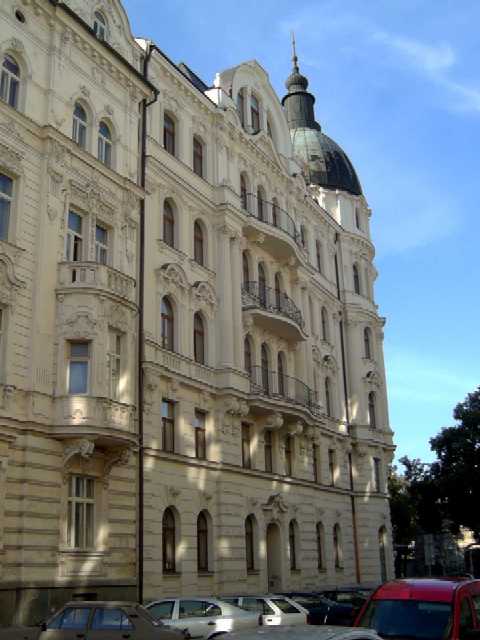
We only stayed one night, but the compact nature of the town meant we saw much of what there was anyway. There is quite a bit more in the area but we would have needed a car, which was not possible because of the need to leave it in Poland in the way out. Not being a tourist area, restaurants were tricky, which we solved by eating at a Chinese place above the main square – on the advice of a taxi driver in Warsaw! Quite how so many Chinese end up in Olomouc is one of lifes mysteries.
From there we took the train to Kraków. Unfortunately Olomouc isnt on the direct line, so we had to take a short local train to catch the direct Czech-Poland train (half of which goes to Warsaw, half is split off and goes to Kraków). The local station we had to wait at, Přerov, was a bit of a flash-back really to the few days I spent in Moscow and St Petersburg (then still Leningrad) over twenty years ago: especially the cafeteria and bar.
Fortunately we were to find that most of Polands eating facilities have been upgraded in the last couple of decades, because the concept of eating in places like that frequently was a trifle depressing! (It was clear that most of the drinking establishments outside the centres of the main towns are places I would avoid unless pressed, but then the children pretty much rule them out anyway. They reminded me of NZ public bars from a couple of decades ago.)
Kraków
We spent two nights in Kraków, though perhaps it deserved more.
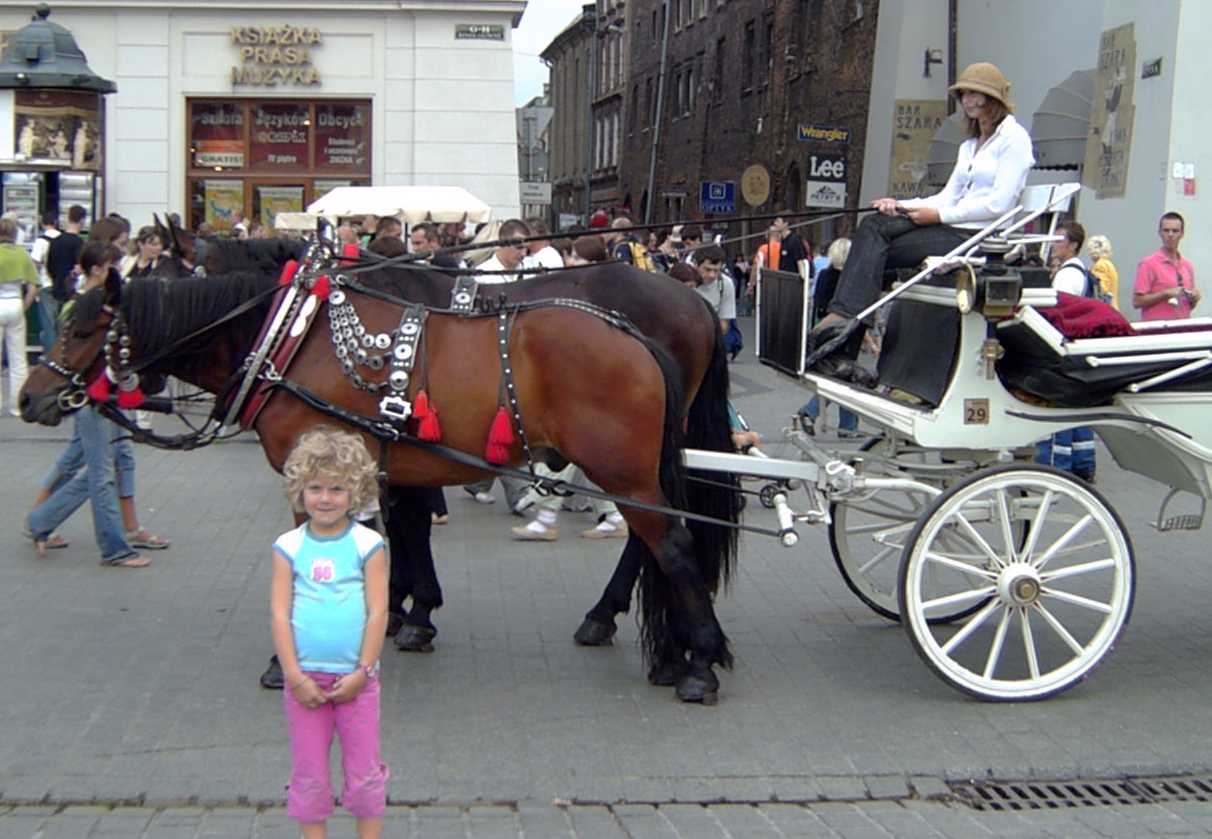
The old city is lovely, but not particularly suited to us, I felt. Neither Alison nor I have much time for ecclesiastical sight-seeing, which seems to be the main attraction. We took a ride in a horse-drawn carriage for Matilda's benefit, and the young lady only seemed interested in pointing out churches or where "our Pope" had gone to university or made a speech.
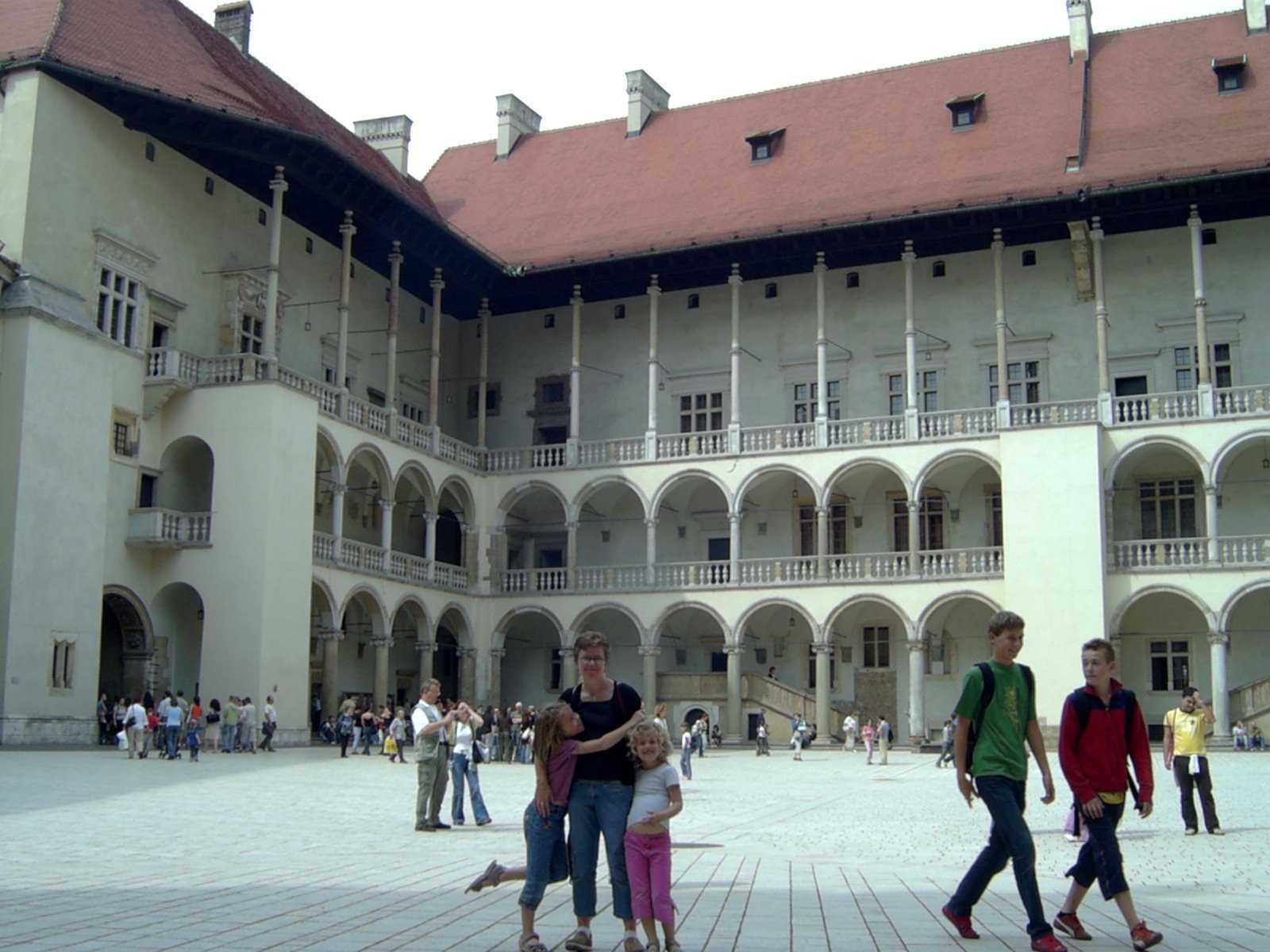
Like most of the larger cities we visited, the "castle" had long since stopped being military buildings and become a palace (like Windsor or Edinburgh, but more so). Often they have quite stunning interiors, of course, but prolonged exposure to such things has dulled Alison and me – and the kids start to get very ratty if we trudge slowly through corridor after corridor of old furniture and paintings (they are long-suffering on our travels, but definitely not saints).
On the morning of the second day we visited the National Museum. There was an exhibition of Art Nouveau works which was pretty neat, but would have been better if the attached shop had more of them for sale as reproductions. Normally were not much into gift shops attached to museums, but the ones in Poland were particularly disappointing because for once we were willing purchasers and but were unable to find anything we wanted to buy! We also looked at the collection of Polish art from the 20th Century, which only hardened my conviction that I should stop going to collections of modern art. We also did a quick tour of the section devoted to the military history of Poland, which suffered from trying to cram too history into half a floor of a museum.
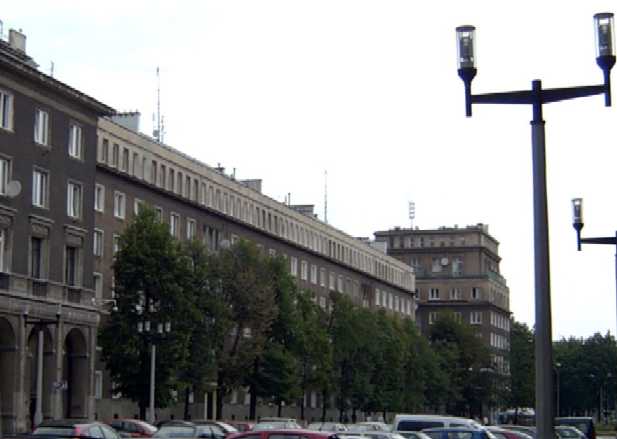
That afternoon we hired a guide for a couple of hours to tour the Soviet planned city of Nova Huta, which is a sister city to Kraków built as a model city by Stalin. We make a point of looking out for Socialist Realist architecture where we can, but there is surprisingly little, just like in the Baltic. The centres of the towns were rebuilt on their pre-WWII basis if they need rebuilding (which many did not) and few new civic buildings were erected during the Soviet period. Riga and Warsaw both have tall Stalinist towers based on the same style as the Moscow Palace of Culture looming in the city centres, but they are the only really large Soviet buildings we have seen. Every now and again you will see a building built for some ministry or other, but their squat nature and lack of colour (generally being concrete) means that they are barely noticeable.
I can't help get the feeling that the solution to housing and office space in the Soviet period was to cram people ever more tightly into the space already built, though of course they also built nasty great concrete apartment buildings on the outskirts of the cities just like everyone else at the time. Nova Huta is therefore unusual in that it is entirely built in the Socialist Realist mode and you can actually get some space to see the buildings. As the guide provided transport (a clapped-out "Polski" Fiat) the cost was reasonable and it meant our specific questions were answered. Getting that far out on public transport would have been very slow and tedious.
Driving in Poland
From Kraków we hired a car in order to do eastern Poland. The responses we got to our plan suggested this was not a common thing to do. Our guide to Nova Huta expressed surprise that we would want to visit eastern Poland and a Kraków man we met on the the train was horrified that we would consider driving in Poland at all, since he was convinced it was a lethal exercise. But the one that got me was the young woman at Avis: she was astounded when I put that we would be spending a couple of nights in Biała Podlaska. When the hire company, of all people, are surprised that you actually intend to drive your car any distance something has to be wrong!
In fact I found that driving was mostly OK and we didnt have even a minor scare. It was certainly slow – the car's distance/time device was pretty consistent that we averaged 60 kph, and we didnt drive in cities much at all. The minor roads are frequently narrow and very poorly sealed, while the more major roads have more traffic, much of which is very slow. Other than the biggest highways, which skirt the towns, the seemingly endless stretches of built-up area certainly try the patience. The Poles adjust to this by driving whatever speed they like: the numerous little Fiat models (built in Poland under license) putter along at 60 kph while the richer folk in their new Audis zoom past at over twice that speed.
But only once did we see the sort of suicidal behaviour that we had heard about: on the stretch into Warsaw from the north the overtaking had to be seen to be believed – cars were sometimes overtaking three wide across a narrow road, despite the presence of on-coming traffic. However, I can well believe that driving at night in Poland is very risky, with reckless drivers competing for space with slow vehicles on poor quality roads. The heavy drinking habits of the Poles and tree-lined roads would only add to the carnage. Of course, in winter there is snow and ice to add, and many more hours of darkness.
On to Zamość and SE Poland
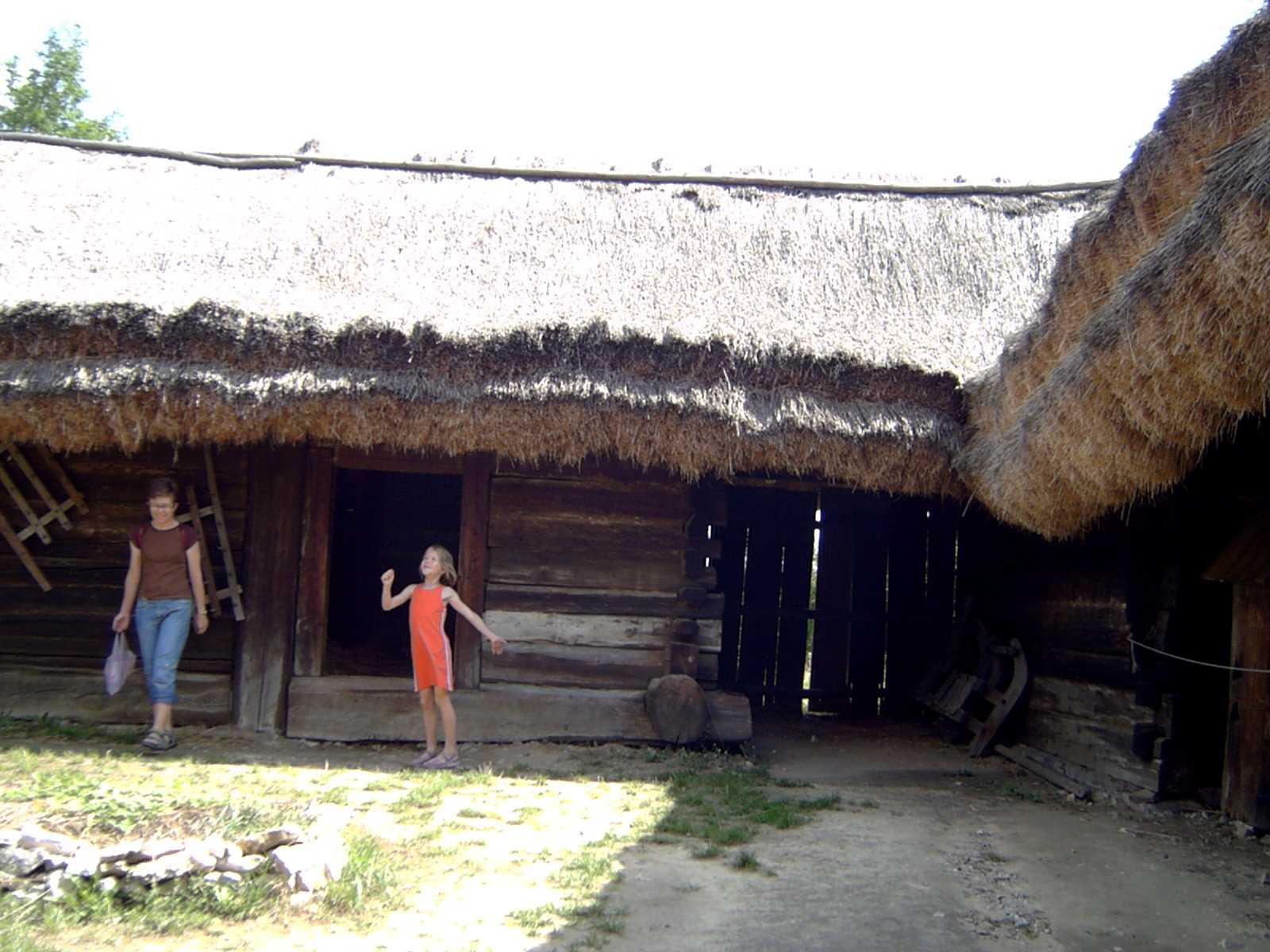
On the first day we stopped at an outdoor Ethnographic museum, where they cart in and restore old buildings to their original form. It was quite good I thought, though not everyones cup of tea. Some of the buildings having quite decent explanations in English, which helped explain nicely what we were looking at.
Then we drove on, past a huge semi-ruined castle at Chęchiny and the walled town of Szydłow. Although the ruins are splendid, Szydłow is very much not a tourist site and the looks we got from the locals did not inspire confidence in the quality of welcome ahead (apart from probably knowing all the locals anyway, they could see we had a Warsaw registered car) so we didnt stop to look at all. In fact, although many Poles do seem to walk about with a perpetual scowl, especially out in the countryside, they seemed perfectly friendly in person. The only bad personal service we experienced was when a waiter at the next stop, Sandomierz, took the 5 złoty coin proffered for a visit to the toilet and declined to give change, despite it only costing 1 złoty (we just declined to give a tip, so he didnt particularly gain by his rudeness). Traveling in France is generally worse for rudeness, in my opinion.
Our eventual destination was Zamość, which is a funny old town: it was built in grand style by a very rich family (the Zamoski, hence its name) and was an important fortress but has since become very much a backwater. So while much of the centre is intact Renaissance period, and there are some nice remaining fortifications, there is an air of shabbiness about the place – which I always find appealing somehow, in a Graham Greene kind of way. Whereas Latvia, Estonia and Czech all are very German in their older architectural styles, one of the odd things about eastern Poland is just how Italian the old bits look. Bits of Kraków were like this (as in the photo above) but Zamość even more so. Instead of the Gothic effect of stone and verticalness, one gets painted arcades and the stress on the horizontal.
As quite a few locals visit the town, it was quite well served for restaurants, but I wish our hotel had been better: this was the one place which was sub-standard on the trip, being peculiarly furnished and smelling musty (there is a much nicer hotel in town, but outside our budget). Apart from an incredible skimpiness with bed linen (do Poles take their own linen to hotels, we wonder) and funny little towels, the rest of the Polish places we stayed in werent too bad really.
The reason for choosing Zamość, apart from it being a UNESCO site, is that there was a major battle in the neighbourhood in 1920. Normally I dont care much for visiting battlefields, but this one is of particular interest to me, so the next day we drove out to it, and Alison and the kids had to watch me take photo after photo of what looked like identical fields. As part of my desire to get to exactly the right spot, we unwisely ventured onto unsealed road. That was to result in getting stuck in a muddy rut and a couple of times I had to get out and push while ankle-deep in mud. The resulting mud-splattered car got quite a few quizzical looks and a couple of comments, so we were pleased to find that automatic car-washes have reached eastern Poland.
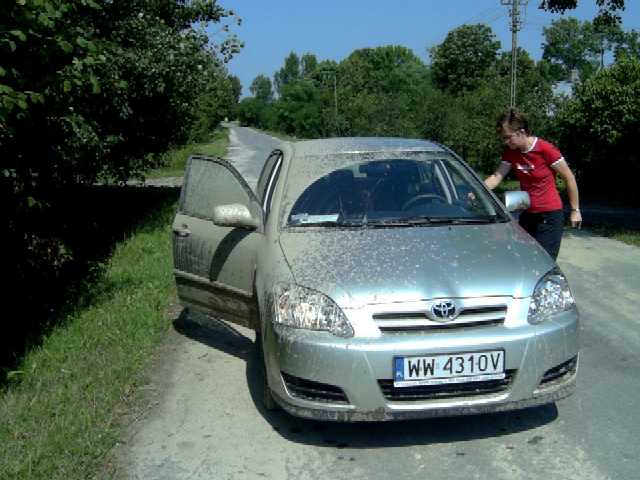
The Polesie
The next destination was north through the Polesie, better know in English as the Pripet Marshes. The Polesie area has fascinated me for a long time, appearing frequently in books as a major impediment to movement of armies, building of rail lines etc. There was precious sign of any marshes as we drove through, though obviously the main roads avoid the worst bits, which left me somewhat disappointed. Given that a city the size of Hamilton (Pinsk) can be right in the middle of the area it seems it is easy to exaggerate its bogginess.
We had considered visiting the local National Park, which has areas which have been returned to the natural wet-land state, but the main office was unintelligible to us as it was entirely in Polish and we so flagged that. By now we were clearly into an area that even other Poles don't tend to visit very much, and basically nothing was in English and no-one spoke more than a handful of words of it. We were expecting that, and we are used to traveling in such circumstances, but it did tend to inhibit what we could do.
So we pressed on north following the Belorussian border. Clearly this is one of the least advanced areas of Poland, and a beneficial result of that, for us, is that many more old buildings remain in this area. Less pleasingly, we kept looking for a decent place to eat lunch and not finding one. There only seemed to be smoky bars offering the local variants of "pub" food, which weren't very attractive even if we didn't have children. Eventually we stumbled into Kodeń which seemed to be the scene of some local event of importance. We went to see what all the fuss was about and see if we could find some lunch, but sadly all the stalls were setting up for that evening and were not yet in the business of cooking. However with all those people assembling and singing in front of the church, clearly there had to be some lunch spot about, and eventually we found a church cafeteria from which we (with much pointing and poor pronunciation of Polish) managed to extract some food. It turns out that the town has a famous icon (stolen centuries ago from Rome by a local nobleman) and thousands of pilgrims were turning up as it was the day before Assumption.
Did I mention Poland was Catholic? At first we struggled to work out what the benches outside the churches were for, but on Ascension they were full with the over-flow of worshipers and it was clear that every parish had at least one major service (it was a Tuesday and, as far as we could tell, not a public holiday). The traditional Polish pattern is to have large churches for an area, rather than the English and French system of a small one in each village, which does tend to increase congregation size. What did surprise us, however, was how few old parish churches there were: it seems that virtually every one has been rebuilt recently, generally monumentally and in brick. Perhaps the results of WWII and the following Soviet neglect made it necessary, but that was not true of the Baltic, which had a perhaps worse historical experience with the Soviet anti-religiousness. (Generally the Soviets did not pull down churches, they merely closed them, and not even that in Poland.) I wonder how many lovely old churches were destroyed unnecessarily in the outburst of piousness following the collapse of Communism.
Biała Podlaska
Eventually we rolled into Biała Podlaska. It is a bit of a dump really, and we saw its "sights" in a couple of hours that evening. Anyway, the hotel was nice, and had a restaurant with the menu translated into English (of a sort), which was nice because finding good food might have been a challenge otherwise.
We were booked to spend two nights Biała Podlaska but since we had already seen what there was the first evening we spent the next day on a drive down to Lublin and back. First stop was the palace at Radzyń Polaski, which must have been grand at one time but is now sadly in need of repair. Next was a palace at Kozłóvka that has been completely revamped and is a major tourist trap for locals. We avoided the building itself as a guided tour in English was going to cost a fortune and not be particularly interesting to us, and instead visited the museum devoted to Socialist Realist art. Although small it is packed full of every kind of art from that period. Paintings, posters and sculptures were no surprise, and pretty much what we expected, but what was cool were the unexpected items for domestic use: the carpets done in the style were particularly nice, but there were also examples of match-boxes and other disposable items. Again we were disappointed that there were so few reproductions for sale, at a place where we were sure there would be something.
Like the Baltic states, the Poles have pretty much wiped out evidence of the Communist period, except for buildings that would be too expensive to remove and a few memorials commemorating the "liberation" of Poland from the Nazis. Even then, overtly Communist elements are generally removed (the only one I found was a battered red star above a shabby memorial in Kodeń). A museum dwelling on something Soviet in a not entirely negative way is therefore a rarity. Apparently, the Socialist Realist period didn't even last very long in Poland, the Poles being to a very large extent resistant to anything that smacks of Russian-ness, let alone atheism.
Then it was on to a quick look around Lublin old town before returning to Biała Podlaska. Lublin is a nice place in the centre, with an extremely silly "castle" but that is surrounded by pretty grimy looking suburbs.
North of Warsaw
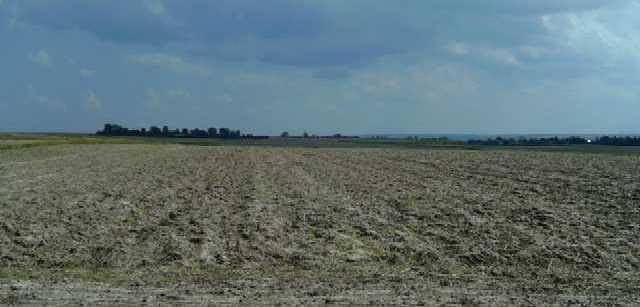
The next day we drove west to Pułtusk, which is north of Warsaw. By now I was heartily bored with the Polish countryside. Not everywhere we drove was flat – some of it was only almost flat. I don't believe I needed to do a handbrake hill-start in the entire trip. Sadly, what limited variety there was in relief was not matched by variety in the types of farming nor the architecture, which were depressingly similar everywhere we went. I know that there are some mountains to the extreme south, and believe that the Mazurian lakes can be quite pretty, but the bulk of the country has a sameness about it that gets tedious.
Pułtusk is only a little place, despite being quite old, and is largely unspoiled. Nevertheless, there definitely seemed to be more money about in this area than in the east. The shops were selling things like expensive furniture that implied to me more people with money.
The next morning we drove in a rather odd loop to Ciechanów: the unusual course being largely determined by my desire to see the general terrain of a couple of 1920 battlefields. After much confusion trying to find the medieval castle in Ciechanów we ended up in Opinogóra, because the map showed it as having a castle. Except it was the wrong one, though at least there was a reasonable restaurant there for lunch. Eventually, after much pouring over the map, Alison managed to find the correct one. (It turns out our original problem was the guidebook giving us incorrect advice: the Prague guidebook also gave us some poor information about opening times that resulted in some disappointment.)
Warsaw
That afternoon we headed into Warsaw, with a very brief excursion to look at Modlin fort. We handed the car in and spent that evening and two full days in Warsaw, which was probably enough.
By now we were pretty full of "old towns", especially as Warsaw's is actually only a reconstruction (the Nazis having dynamited much of it in 1945), so we gave that only a quick look. However, because the centre is a reconstruction anyway, there is no reason for them not to finish the job. Currently they are rebuilding the town walls. Luckily, like most Polish fortifications it was brick, which is much cheaper than stone to rebuild. In a few years it should be quite impressive, but enough was finished already to give a very good impression of how it must have been (albeit rather more sanitary now in the moat).
Other than that we wandered around looking at some of the newer areas, making a point of going to the place where the Communists used to have their military parades. It was pretty hard to miss the Soviet Palace of Culture that Stalin generously donated to the Poles, which we could see out our hotel window, in all its glory.
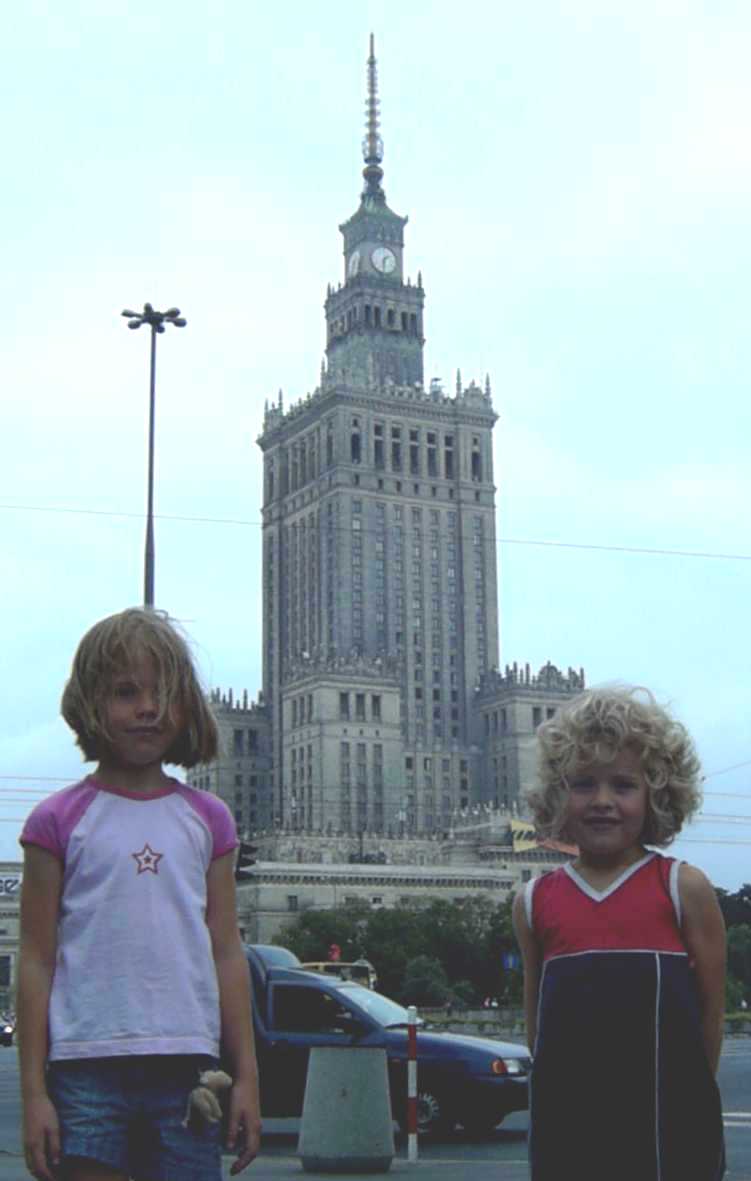
I also annoyed the others by taking too long in second-hand book stores. By now the kids were starting to lose patience with all this, to them, aimless tramping around. Fortunately through the potentially really dull bit in the middle of the trip they were magnificently patient, but once they could see flash playgrounds and McDonalds again they became a bit more aware of what they had been missing! The Marriot, which we could only afford thanks to a special weekend deal, had a swimming pool which they visited for long periods each afternoon.
While the kids were swimming, I took the opportunity to go the Warsaw Military Museum. The Poles are really big on their military history, and this museum was large and really quite good. I could have spent a day there probably. Again the absence of attached shop was annoying – I had counted on buying some posters or specialist uniform books there.
Berlin
After Warsaw we took the train to Berlin, from where we could get home with a direct flight on a budget airline. The trip was already scheduled to take six hours, but in the event was a couple late, so it ate up an entire day. It wouldn't have been so bad, except the landscape didn't change at all, and unsurprisingly the kids started to get noxious towards the end.
Neither Alison nor I had anything we particularly wanted to see in Berlin, so we spent the entire morning of our day at the zoo. We then had a walk through the centre of the city which took us past the Reichstag, largely by accident. Thinking it might be quite nice to go up the glass roof and have a look around, we were dismayed to find that the queue was an hour long, which was out of the question. However, luckily one of the information people spotted Matilda and pointed us towards the side entrance for those unable to queue for long periods, so we got up almost immediately. Once up there we could see just how different Berlin is from most big cities.
It seems that most of the major buildings survived WWII more or less intact, but sites too closely associated with the Nazis were demolished and the "East" cut a huge swathe through the middle of the city to build its wall. The resulting insecurity also inhibited the Western sectors from building much. So with the dismantling of the wall, a large amount of land in the heart of the city became available for construction while at the same time the requirement for government and business buildings sky-rocketed. The result is that there are lots of brand new buildings in the centre of the city, quite unlike most of the old capitals, and more importantly, there was no inhibition on building boldly.
While Paris has lots of spectacular old buildings, it actually lacks much of interest that is new. What recent grand building there is (la Defence, the Bibliotèque Nationale) tends to be out from the centre and is almost invariably state-owned. Private buildings there tend to be restrained (or are forced to be restrained). The result is that walking around the city, once off the Champs Elysées is that you go from one old famous "sight" to another "sight" through a uniform canyon of apartments (parks being rare).
Berlin by contrast has much more variety, as the old is mixed with the vibrant new. I noticed the same effect in London, although less strongly as the cost of land inhibits building in the centre and the roads tend to be too narrow. On the whole, I think I prefer Berlin and London aesthetically to walk through.
And so home
In retrospect we probably could have cut a day out of Zamość and Biała Podlaska that might have been better spent somewhere else. Partly we planned it that way to ensure we didn't have to do long drives on consecutive days, in case the roads were as bad as we had been led to believe or if the children were getting tired. As it turned out the roads were OK and the children actually like to spend time in different hotels.
Otherwise I think we timed it pretty nicely. We didn't go to any of the numerous concentration camp sites that we passed, as they are not ideal places to take children. Even just tracing possible routes to drive I kept coming across names like Sobibor and Treblinka, let alone the ones attached to the bigger cities.
Likewise we didn't do the interiors of many churches or palaces. Just not enough time really.
Although there are obviously plenty of people without much money in Poland, very little of it had a bad feel and we weren't afraid to walk around anywhere. (Obviously the big cities have some nasty bits, but that is pretty universal.) There wasn't much English spoken away from the tourist sites, and not even at some of them, but we managed with our dictionaries and lots of pointing.
